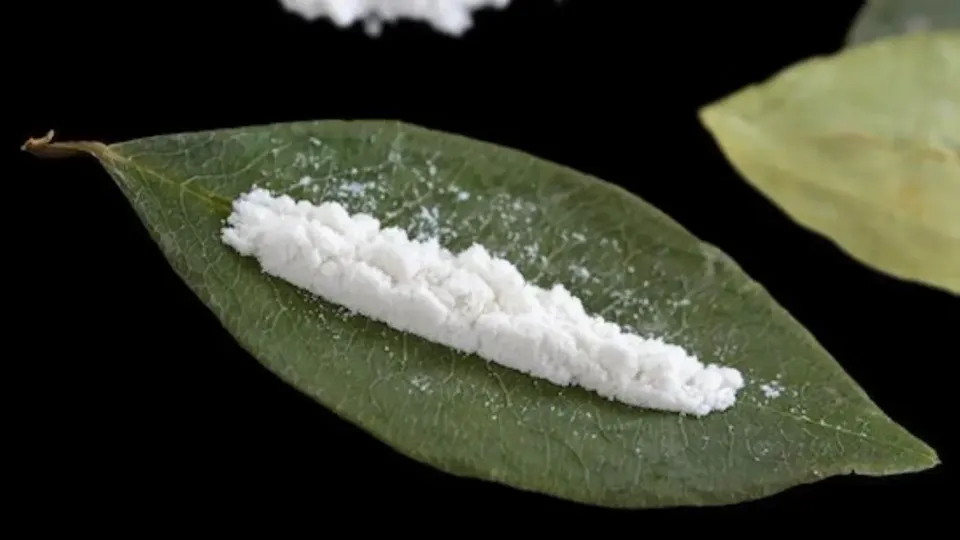Cocaine & Culture: How Class, Race, and Ritual Shape Our Understanding of Drugs

Does Cocaine Kill People—Or Does Culture?
Cocaine doesn’t kill people; culture kills people.
Actually, non-evidence-based policies, systemic racism, and the erasure of Indigenous wisdom kill people—but all of these are shaped by culture.
Sure, cocaine isn’t “safe.” Unlike mushrooms or MDMA, it doesn’t have low toxicity and therapeutic benefits. It’s closer to alcohol and opioids—both of which are mostly legal.
But when you look at the data, cocaine use results in fewer hospital visits and deaths than either alcohol or tobacco.
The estimated minimum lethal dose of cocaine is 1.2g—far more than what most social users consume in a night.
What Dr. Carl Hart Gets Right About Responsible Drug Use
Dr. Carl Hart, a neuroscientist who studies psychoactive drugs, found that most drug-use scenarios cause little or no harm. Some even offer mental, social, or relational benefits.
“Not the bullshit you buy on the street that’s been stepped on. When you go to places like Colombia... and get the good stuff... it could be a really good evening with you and your significant other.”
— Dr. Carl Hart in GQ
But if you’ve ever seen how cocaine is made in “resource” countries, the battery acid, gasoline, and concrete used in the process might make you question whether “good” cocaine even exists.
What’s left—if processed correctly—is cocaine hydrochloride, a salt that’s chemically far removed from the sacred plant it once lived in.
Coca Leaf vs. Cocaine: Not the Same Drug
The coca plant, in its natural form, is packed with benefits.
Depending on origin, a tea bag of coca leaves contains about 5 mg of cocaine. Chewing 30g of coca leaves gives blood concentrations of roughly 98 ng/mL—compared to 20–50 mg per line in modern street cocaine.
But the leaves offer much more:
- Calories, minerals, and vitamins
- Relief from stomach pain, altitude sickness, nausea, and indigestion
- Mild energy and social stimulation
Coca use in Cusco and the Sacred Valley is as normalized as mate is in Argentina. It’s cultural, social, and spiritual.
In Peru, the leaf is revered like gold—used in rituals, medicine, and ceremonies dating back to 1,000 B.C.
The Sacred Salt Became White Powder for White Power
But the salt’s out of the leaf now—and it’s not going back.
Especially when it’s used to:
- Fund CIA-backed paramilitary movements
- Bail out banks
- And fuel white power structures, especially in the U.S., the largest cocaine consumer in the world, followed by the UK and Australia
Crack vs. Cocaine: How Racism Shapes Drug Policy
In the U.S., the media’s portrayal of crack cocaine as a "Black drug" shaped public opinion and U.S. drug policy.
After the widely publicized death of Len Bias, a young Black athlete, lawmakers enacted the Anti-Drug Abuse Act of 1986—which enforced a 100:1 sentencing disparity between crack and powder cocaine, despite their identical effects.
Crack became a political scapegoat. Treatment? Harm reduction? Barely discussed.
How U.S. Drug Policy Criminalized Black Communities
Although crack and powder cocaine have identical effects, the U.S. government built policy around racialized perception, not pharmacology.
Key facts:
- The Substance Abuse and Mental Health Administration shows no significant difference in drug use across races
- But in 2019, 81.1% of those convicted for trafficking crack cocaine were Black
The legal system manufactured a racial underclass through sentencing laws—using crack as the excuse.
What About France? Postcolonial Racism in Disguise
In the U.S., crack discourse is about race.
In France, it’s framed as a social and urban issue—but don’t be fooled.
France doesn’t collect racial data (by law), which makes direct measurement difficult. But qualitative research links crack use with migrant communities, reinforcing postcolonial hierarchies.
Why can’t race be discussed openly?
Because of French Republic Universalism—the idea that all citizens are equal, regardless of origin. While noble in theory, it creates a colour-blind discourse that fails to acknowledge real systemic racism, especially rooted in French colonial ideology.
Why France Still Handles Crack Cocaine Better Than the U.S.
Even with its colour-blind lens, France is far better equipped to address crack addiction than the U.S.
Since the late 1970s, France has:
- Enforced strict drug policy
- Funded publicly accessible drug treatment systems
- Included harm reduction services in their health strategy
Source
In contrast, the U.S. built its drug strategy on incarceration, not care.
Cocaine Is Now Classless—But That Doesn’t Mean It’s Equal
Crack still gets framed as a poor person’s vice.
But cocaine? It’s everywhere.
A 2019 UK Home Office drug review found:
- 42% of users were in managerial roles
- 35% were manual workers
- Just 3% were unemployed
This reflects more than London. Similar dynamics likely apply to other Western nations.
Why Work Culture Shapes Which Drugs We Use
Take Connor, for example. He left an £80,000/year rig job rather than submit to a drug test.
Why? Because rigs drug test, and cocaine clears the body faster than marijuana.
Tabitha Lasley writes:
“The higher up the food chain you go, the greater the potential for scandal.”
— Sea State
I’ve seen the same in Canada’s oil industry. Cocaine is a “safer” option for workers than cannabis or meth, which last longer in your system.
Finance bros do it to feel less hollow.
Nightlife workers do it to keep going.
Truckers lean toward meth.
Academics and artists? We trip out.
Yes, these are stereotypes—but they reveal a truth:
Your class and career shape your drug choices as much as chemistry does.
It’s Not the Drugs. It’s the Stigma.
Anyone can do any drug. And many do.
As Dr. Carl Hart argues, adults should be free to choose how they alter their consciousness.
But most drug policy isn’t based on science. It’s shaped by:
- Anecdotes
- Class-based fear
- Racial stereotypes
- Cultural narratives that blame the drug, not the system
What’s actually killing people isn’t the substance—it’s the stigma.
Stigma causes:
- Discrimination
- Addiction
- Behavioral health breakdowns
- And the internalization of shame
We’re all part of one consciousness. How we choose to experience it—whether through coca leaves, MDMA, silence, or psychedelics—shouldn’t be judged.
It should be studied, explored, and understood.
Want to Explore Consciousness Without Shame?
If you value writing that unpacks complexity without condescension—and teaching that bridges language, culture, and altered states—this is your place.
English Without Borders
Learn to speak and write across cultures with clarity, nuance, and connection. Global English that respects identity, fluidity, and freedom.
👉 Learn more
Cultural Competence Coaching
Challenge assumptions. Learn to listen across differences. Work and lead with depth—not performance.
👉 Book your free call
Fitness On the Move
For travelers, neurodivergent minds, and non-conforming bodies. No shame. No gym. Just support that adapts to your real life.
👉 Start here
Support Borderless, Stigma-Free Thinking
This work is published on Ghost, a nonprofit, carbon-neutral, algorithm-free platform that doesn’t harvest your attention or data.
If it resonates, help keep it alive:
Become a Paid Member
$5/month or $50/year gets you exclusive essays, early book drafts, and discounts to future courses.
Become a Founding Member
Fund radical, anti-algorithmic work with $30/month or $300/year. Your support builds sustainable, independent infrastructure for writing and coaching.
Share, Don’t Scroll
If this article made you think, share it directly.
Don't feed platforms that profit off mental health collapse.
And if you want to live borderless, here are a few tools that help:
- Home Exchange: Trade homes, not hotel bills. Live like a local anywhere in the world.
- Wise: Send money across borders without losing your mind (or half your paycheck in fees).
- Preply: Make a living teaching people worldwide.
- Flatio: A more ethical version of Airbnb.

Member discussion